Crazy Horse, South Dakota.
“My fellow chiefs and I would like the white man to know the red man has great heroes, also.”
– Henry Standing Bear
On June 3, 1948, the work began. Chief Standing Bear and Polish sculptor Korczak Ziolkowski started a project that would not be completed in their lifetimes. At the dedication ceremony, there began a memorial to one of the heroes of the Native Americans, a member of the Oglala Lakota. Thunderhead Mountain was chosen to honor the life of Tasunke Witco, more commonly known as Crazy Horse.
Thunderhead Mountain, located some 40 miles (64 km) from the birthplace of Crazy Horse, is now known as Crazy Horse Mountain and after over 70 years, the work is still a long way from completion. The image above features a sculpture of the final monument as it will appear when complete. In the background, the freshly exposed rock features the face and beginnings of the arm pointing the way to the land of his people. From the Crazy Horse Memorial Website:
Sculptor Korczak Ziolkowski decided to create a monument that captured Crazy Horse’s likeness based on the descriptions provided to honor the principles and values for which Native Americans stood and to honor all the indigenous people of North America. With Crazy Horse riding his steed out of the granite of the sacred Black Hills with his left hand gesturing forward in response to the derisive question asked by a Cavalry man, “Where are your lands now?” Crazy Horse replied, “My lands are where my dead lie buried.”
Above the Information Center at the Native American Educational and Cultural Center located at the memorial is a painting featuring Chief Standing Bear and Sculptor Korczak Ziolkowski at the dedication ceremony on June 3, 1948.
The Crazy Horse Memorial website here features the history of the memorial, its visionary founder, and the sculptor. They knew the monument would not be completed in their lifetimes, they would not take public money even when it was offered, preferring to keep the financials private and under control of the Board and Executive Management team.
There are multiple museum venues on the site, the Indian Museum of North America features the Native American Educational and Cultural Center, the Mountain Carving Gallery, and the Ziolkowski Family Life Collection. The building housing the museum was built by the sculptor and his family during a particularly harsh winter (1972-73) when work on the mountain itself was impossible.
“Storyteller in Stone” Korczak was a noted studio sculptor on the east coast before coming to South Dakota where he worked during the summer of 1939 on Mount Rushmore’s construction. Korczak’s early fame and his work with Gutzon Borglum at Mount Rushmore inspired Chief Standing Bear to ask him to work on the Crazy Horse Monument.
Korczak returned to the Black Hills in 1947 to begin work on the project and he refused to take any salary for his time and experience. At his death in 1982, he was laid to rest in a tomb at the base of the mountain. A more detailed history of the Storyteller in Stone is on the memorial’s website.
Below, I submit for your review, a gallery of images captured at the site of what will eventually be one of the world’s largest monuments to one of the heroes of the Native Americans. If you plan to spend some time at Mount Rushmore, you owe it to yourself to make the 30-minute drive to visit the museums and marvel at the construction project that is underway.
John Steiner
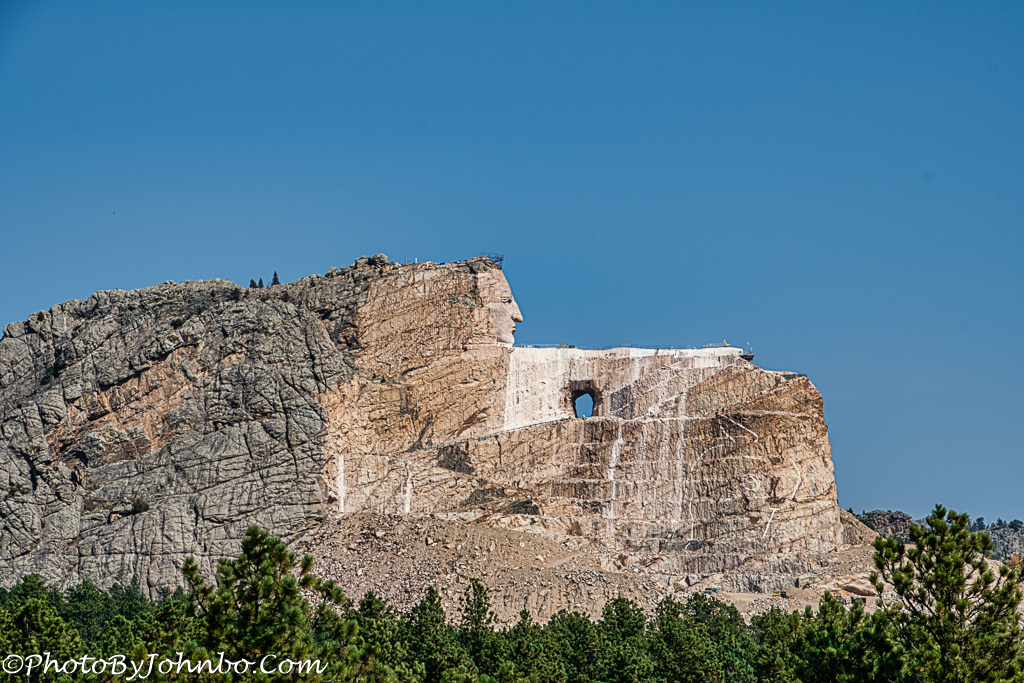

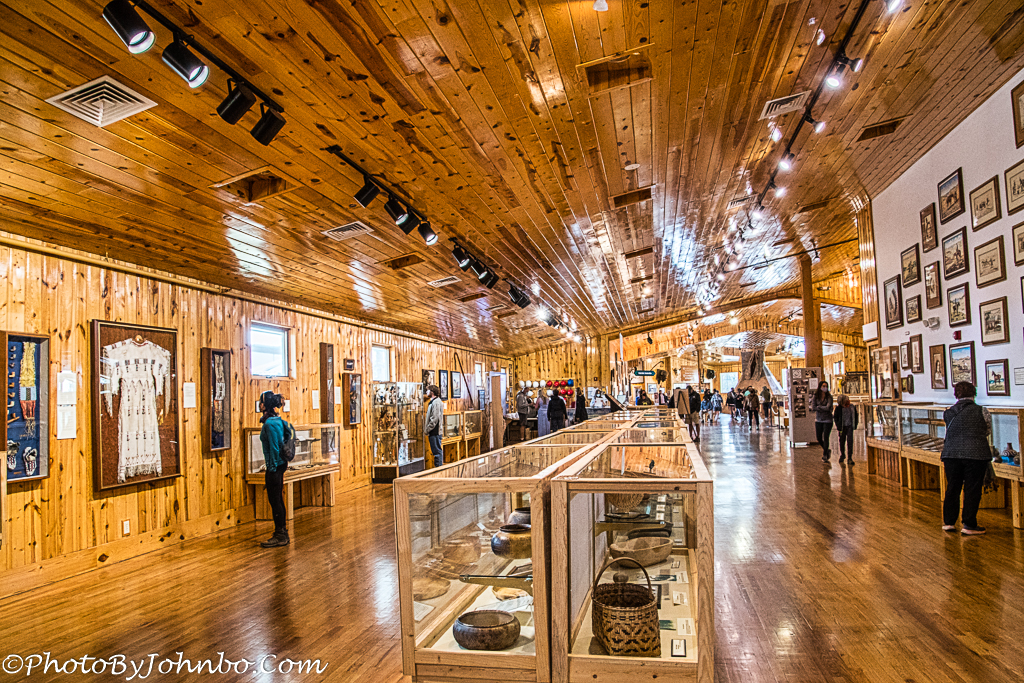
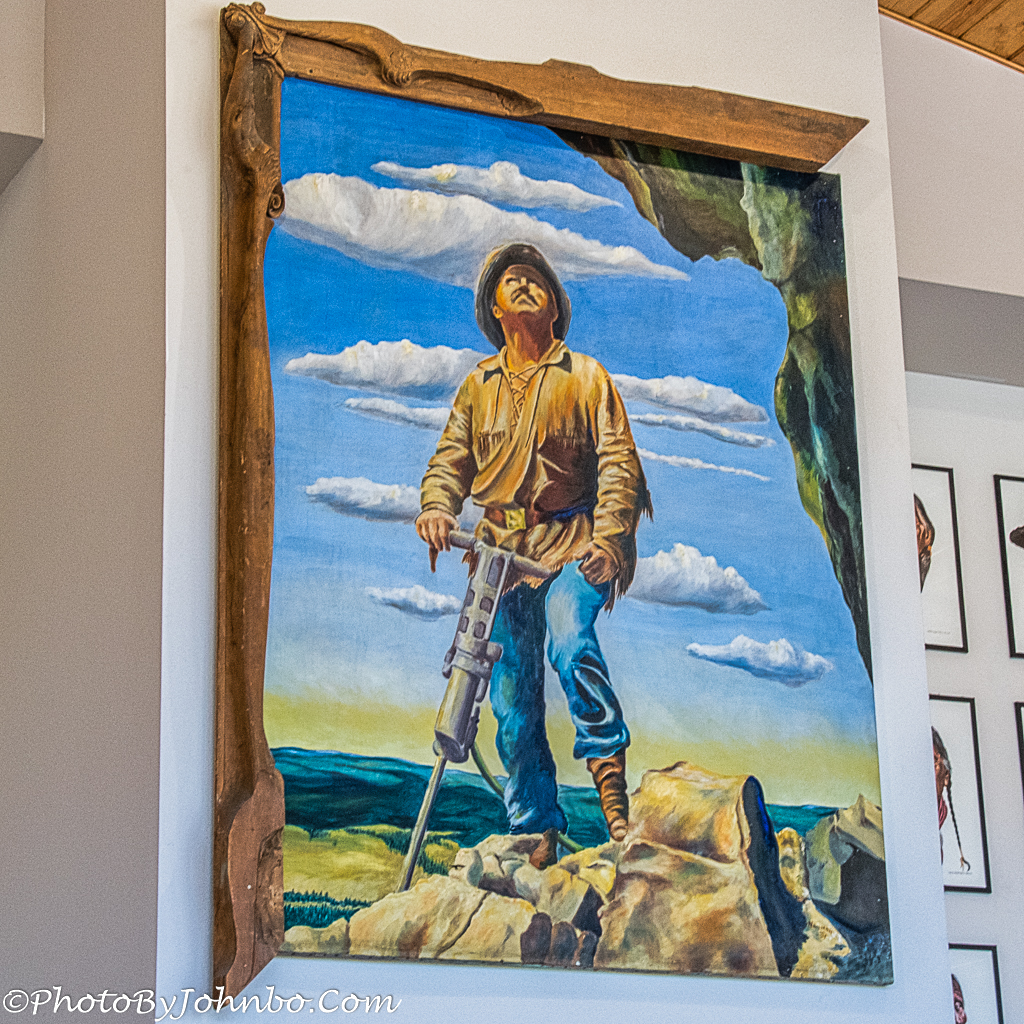
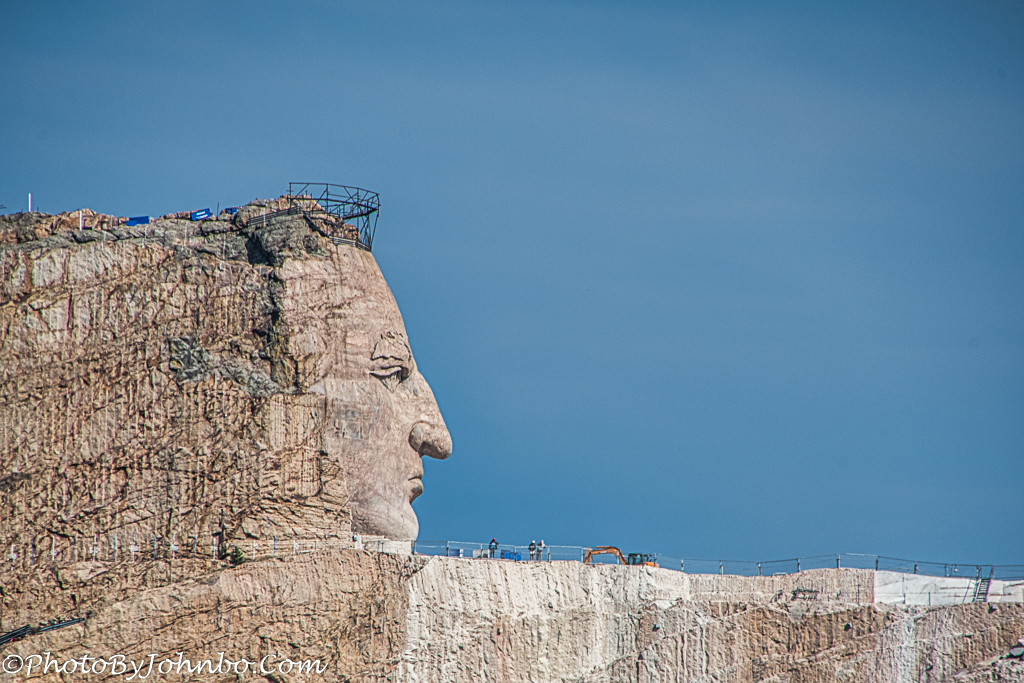
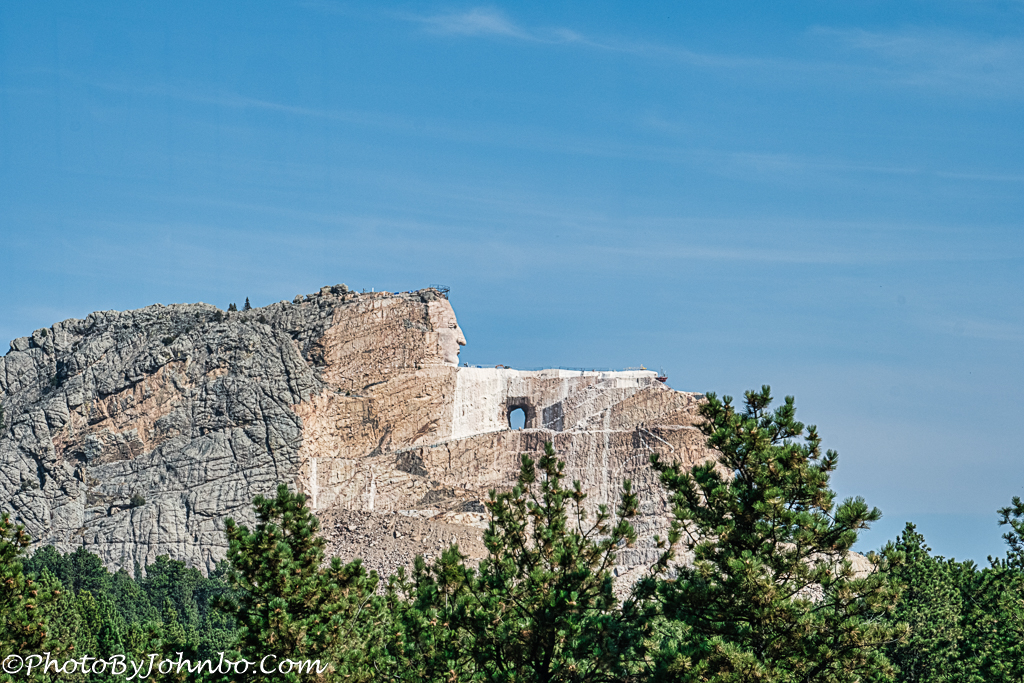
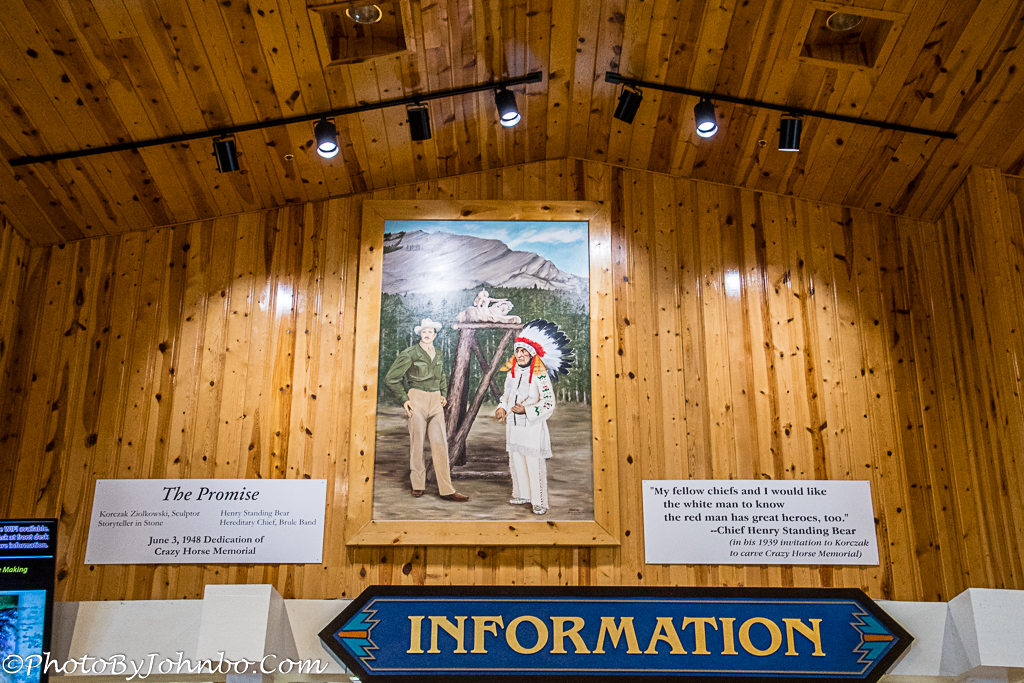
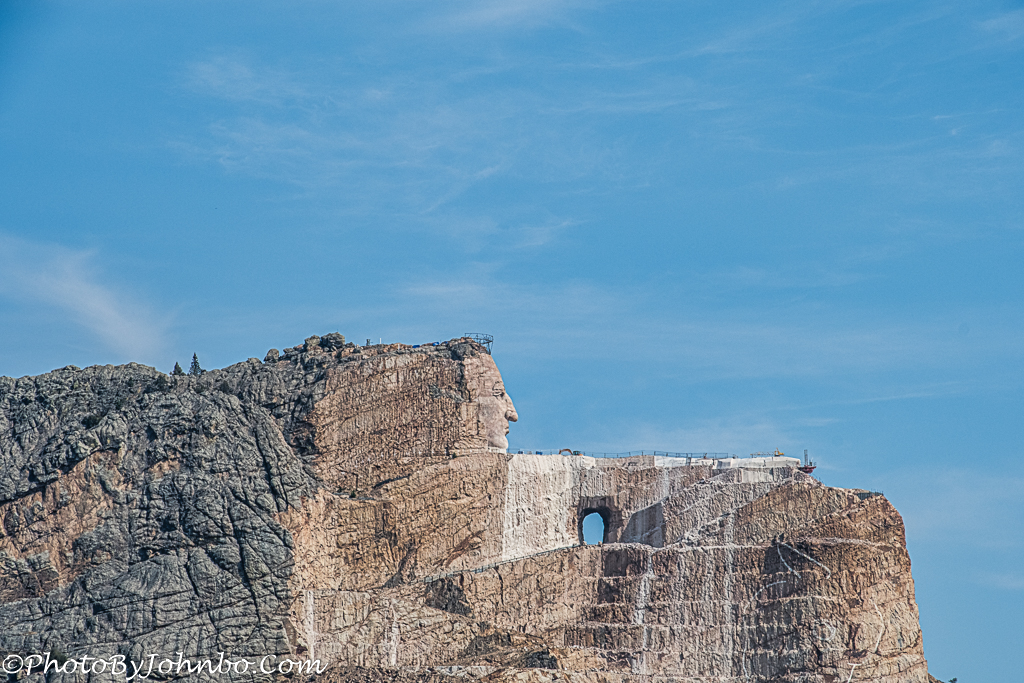
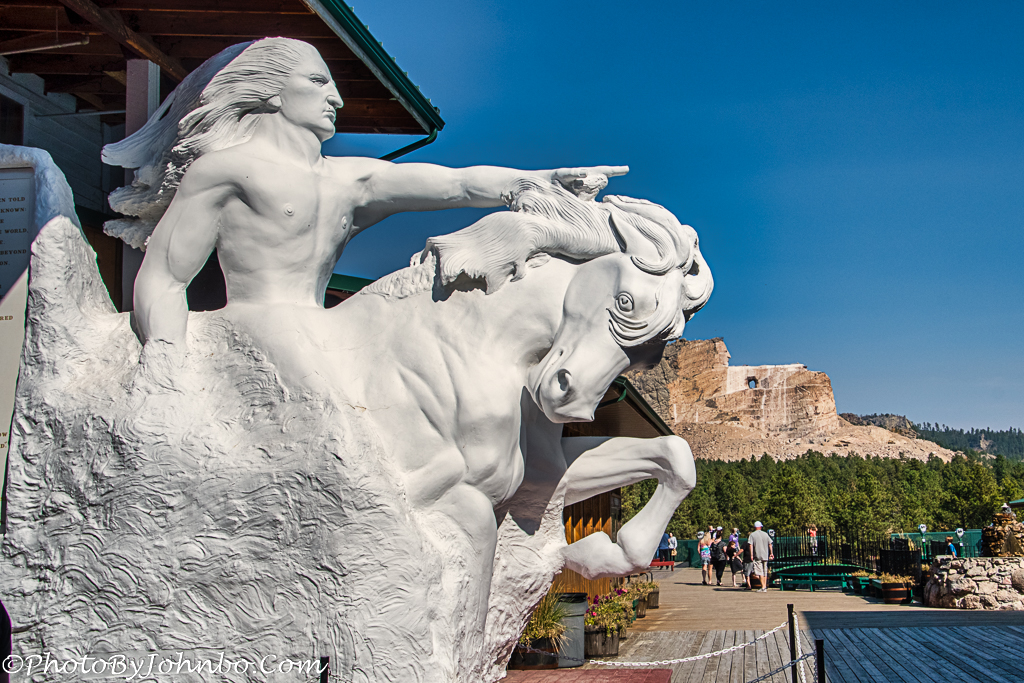

Great post! We came here after visiting Mount Rushmore and in some ways I found it even more fascinating – partly because of the back story and partly because seeing such a giant sculpture in progress really make you appreciate the scale of the undertaking. Don’t get me wrong, Mount Rushmore is amazing, but to a non-US citizen it doesn’t have the same emotional impact, and visually, you have seen so many photos before visiting you feel you’ve already seen it. Whereas here I was completely engrossed in the undertaking to create this work!
Thanks. I, too, was fascinated bbackstop. story. I would love to see one of their night blasts.
I wonder if there is any way to speed this up. Do they lack funding, or sculptors, workers?
I personally think they are doing it on their own schedule, drawing repeat customers who are looking to see the progress since the last time they visited. Truth is, however, I really don’t know.
They take tour busses to the mountain work areas (for a princely fee) so that visitors can see the work up close.
I must admit to having mixed feelings about this sculpture and Mount Rushmore. It certainly is imposing memorials to the heroes they depict and I cannot help but be in awe of the scale of it all, but my heart pangs that beautiful natural scenery should be “defaced” in such a way to glorify humans…
As one who also enjoys nature’s handiwork, I certainly understand your feelings.
I would love to have the chance to stop at the Crazy Horse memorial one day, but I fear that at some point we will have to build concrete hills to replicate the landscape of the past 🙂
Indeed!!
Ive been here, excellent
[…] only a few miles from Mount Rushmore and featured a Travel Tuesday about the new monument here. I will let you choose to read or review that post (or not) at your […]